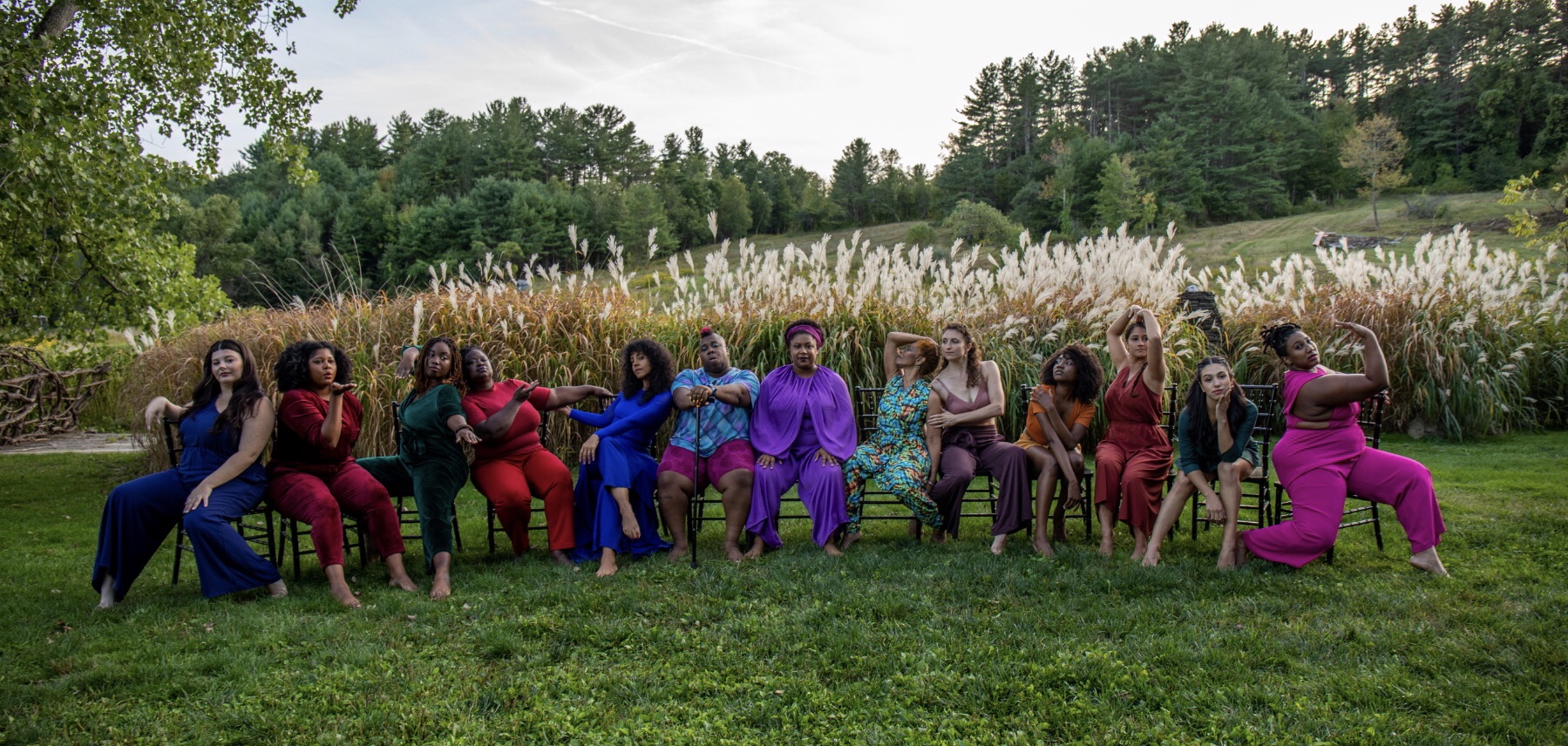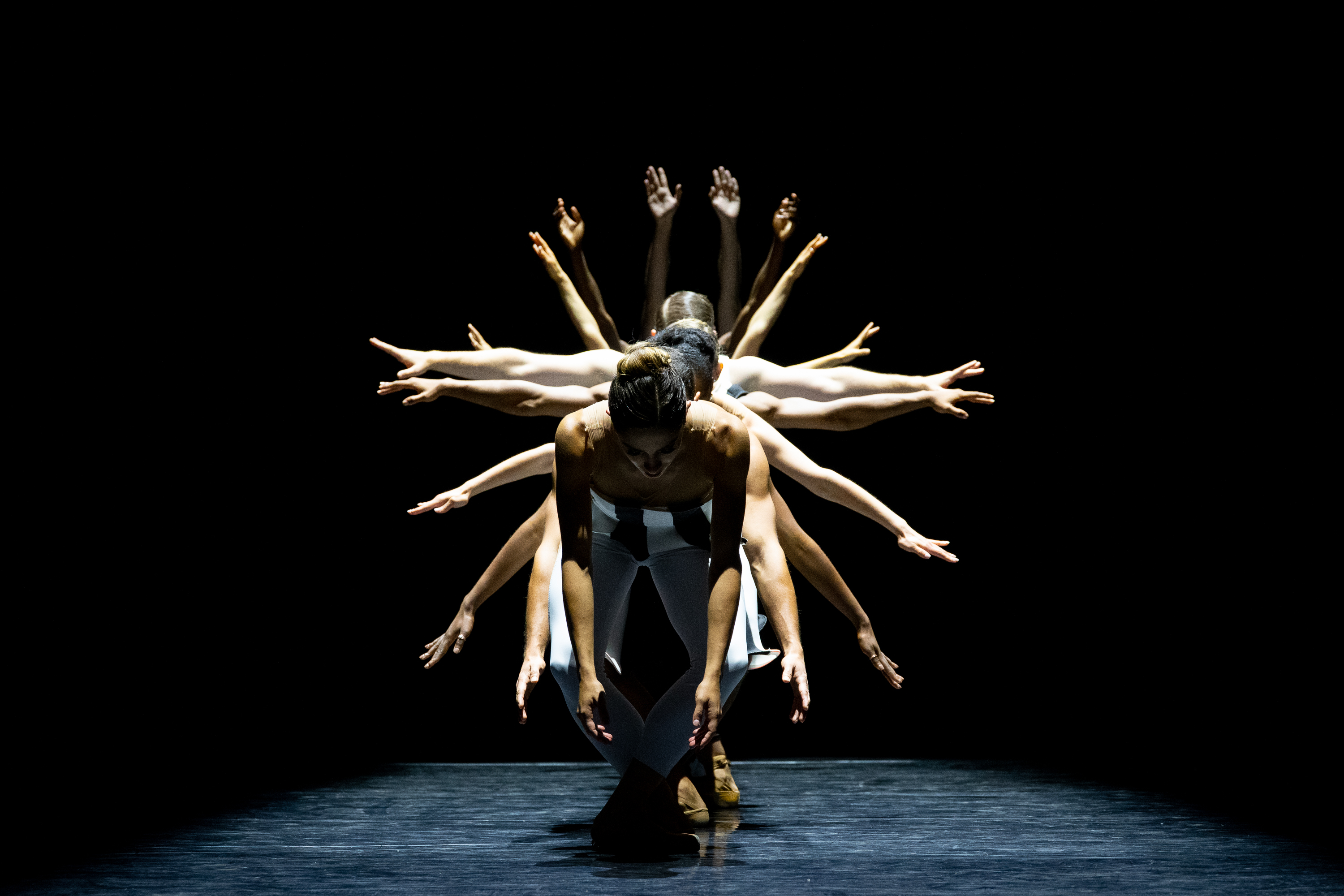“STUDIO TO STAGE” IN TWO PARTS
AUGUST 16-17, 2014 AND EARLIER SHOW ON JUNE 21-22, 2014
JOY OF MOTION, FRIENDSHIP HEIGHTS, D.C.
By Luella Christopher
Copyright © 2014
Jazz – Whether unadulterated or integrated with other styles such as ballet, modern and hip hop – reigned supreme at Joy of Motion’s Studio to Stage and Summer Stock on August 16th and 17th. The program features Joy faculty and the students on whom their choreography is mounted. The “unadulterated” version is showcased in two works by choreographer Bob Boross, each one totally satisfying for different reasons. In the evening’s standout, “Everything Old Is New Again”, Boross pays homage to the late Bob Fosse with moves and music from the soundtrack to “All That Jazz”. Fosse transformed the face of Broadway musicals from the late fifties through the next few decades with moves that most dance afficionados instantly recognize: jutting torsos forward and back while standing with feet in parallel position and knees bent; prances in crouched position, shoulders slouched forward, torqued wrist isolations; Rockette-style unison kicks in slowly advancing phalanxes rather than the faster pace of most Radio City Music Hall shows.
What makes the two pieces even more remarkable: Summer Stock with Bob Boross (each entry on the Joy program is identified by the name of the class) comprises a five-day adult dance camp just prior to the weekend’s public performance. The choreographer’s second piece, “Who Loves You” to the soundtrack of “The Jersey Boys”, distinguishes and dazzles by “contrast costuming”: some of the women are clad in tight-fitting metallic silver tunic dresses while others wear black tights and tank tops. Jeffrey Rathner, a dead-ringer for actor Steve Martin with his shock of white hair and spiffy suit (in the second Boross piece, though he appears in both), eggs the audience on by interacting with several in the front row. Spoken lines by the dancers in “Everything Old is New Again” – even a segment of ad-libbed comments – are wonderfully audible. Unlike lesser attempts by other choreographers to harness live dialogue or recorded narrative, this enhances rather than detracts from the work as a whole. The piece ends with a Fosse signature “amoeba” configuration of compressed bodies.
Motown Remixed Jazz with Maverick Lemons in his piece “High Times” – while manifestly high energy – did not fare so well due to a theatrical device of substituting individually handheld votive candles for black box-friendly lighting. Nice touch, but it was difficult to see the choreography in the first half of the piece. Still, the audience cheered one highly dramatic moment when two male dancers help a female climb over the backs of others. With the lights finally up, we’re captivated by the line, “I Just want to Celebrate Another Day of Living”. Moves are punctuated – as in the use of torsos to twist and undulate – as well as slinky. The nineteen dancers step and sashay in horizontal rows moving in opposite directions. Arms railing in opposition evoke the Watusi or the Frug of the sixties. Again, the costuming is striking: the females variously wear blue, garnet or pink, offset by citrus green tones for the two male dancers.
Jazz also features prominently in Ballet with Tammy Hurt. “Love is What Cha Need” begins on the floor and emphasizes unison movement with a brief nod to basic ballet barre: passage through most of the five positions for arms and feet, then poses rather than bravura until interrupted by a several females who toss off perfectly placed tours de chaîné (turns in a chain style). An engaging segment of choreography ensues with twin duets. The first is danced by Jonathan DeVilbiss, who ultimately catches Alison Finch as she jumps freestyle into his arms. Not to be outdone is Chris Richardson, who swirls Erin Cooper in huge circles over his head. These gymnastic feats bring roars of approval from the audience. The large ensemble reemerges onstage after a quick costume change that reveals the dancers in tank tops of many different colors. This lends striking visual support for the return to small ensembles within the larger corps – duets and double duets as well as quartets. Hurt offers one of the most impressive works of the evening from the standpoint of sheer structure and expansion of ballet movement.
Contemporary Jazz with Kelly Kurst continued the evening’s focus on the genre.
“John Doe” with music by B.o.b. presents unison work for large ensemble with ample use of overhead arms, both raised and angled; grand jetés in place; combo rolls and lifts on the floor. Lauren Bowen stands out as a deftly trained ballet dancer whose exquisite lines, extensions and arches often keep the eye riveted on her. The piece ends with poses accented by sharp unison turns of the head toward the audience as the lighting fades to black.
Modern with Helen Hayes: a lovely if all-too-brief “Twilight” to music of The Piano Guys. Like Tammy Hurt, choreographer Hayes is skilled at combining different styles of dance. Crafted mostly for large ensemble, the piece juxtaposes such moves as dips and elongated arabesques. Two women merit special mention: Frances Alexander, a long-limbed ballet-trained dancer and Roslyn Korb, a surprisingly flexible mover who D.C. modern dance pioneer Liz Lerman no doubt would dub a “dancer of the third age”. Filmy costumes in shades of lilac and lavender add to the streaming atmosphere of the piece. It ends with all the dancers kneeling on the floor, bowing one-by-one through the final fade.
Diverging from the evening’s preoccupation with jazz were Bollywood Fever with Laurel Victoria Gray and BreakDancing with Dana House. The first, “In the Barracks with Gulabi Gang” to music of Shankar-Ehsaan-Loy, depicts flag ceremonies and military salutes. This proved somewhat difficult to link with Indian culture. The second, “adults . . . we got our own thang!” to music of Heavy D & the Boyz, allows South Asian or Middle Eastern dancer Amneet Basra to practically steal the show with her snappy twists on the floor and exotic hip-length dark locks. (Never underestimate the use of hair as a prop!) Derek Gregory, clad in all white with hoodie, emits a contrasting visage to the three women.
The June segment of “Studio to Stage” made for a much shorter evening (five works compared to the August show’s eight). My favorites were Broadway Band with Maverick Lemons, Flava Hip Hop with Esperonto Bean and AfroBeat with Sylvana Christopher. (And you thought I could avoid a little motherly bias?) Lemons, utilizing music of Sarah Vaughan and Max Sedgley, calls forth tight, raunchy moves from his six dancers – the white vests creating a James Bond ambience. Secondly, “Flava” transitions from opening unison moves to solos, pairs and trios who are then showcased one-by-one in what looks like a contest with each other.
Finally, Christopher draws inspiration from the music and dance associated with Nigerian-born Fela Kuti. Her dancers are high-spirited and their costumes portray a brilliant array of African colors and intricate patterns. Flamenco with Alejandro Grandados evincing angular but fluid moves by Grandados and his large ensemble to music by Tomasito and Belly Dance Drum Solo with Laurel Victoria Gray, a seductive and all-percussive work for six female dancers in floor-length satin skirts, rounded out the June program.
Copyright © 2014 by Luella Christopher, Ph.D.
Published by IsItModern?




